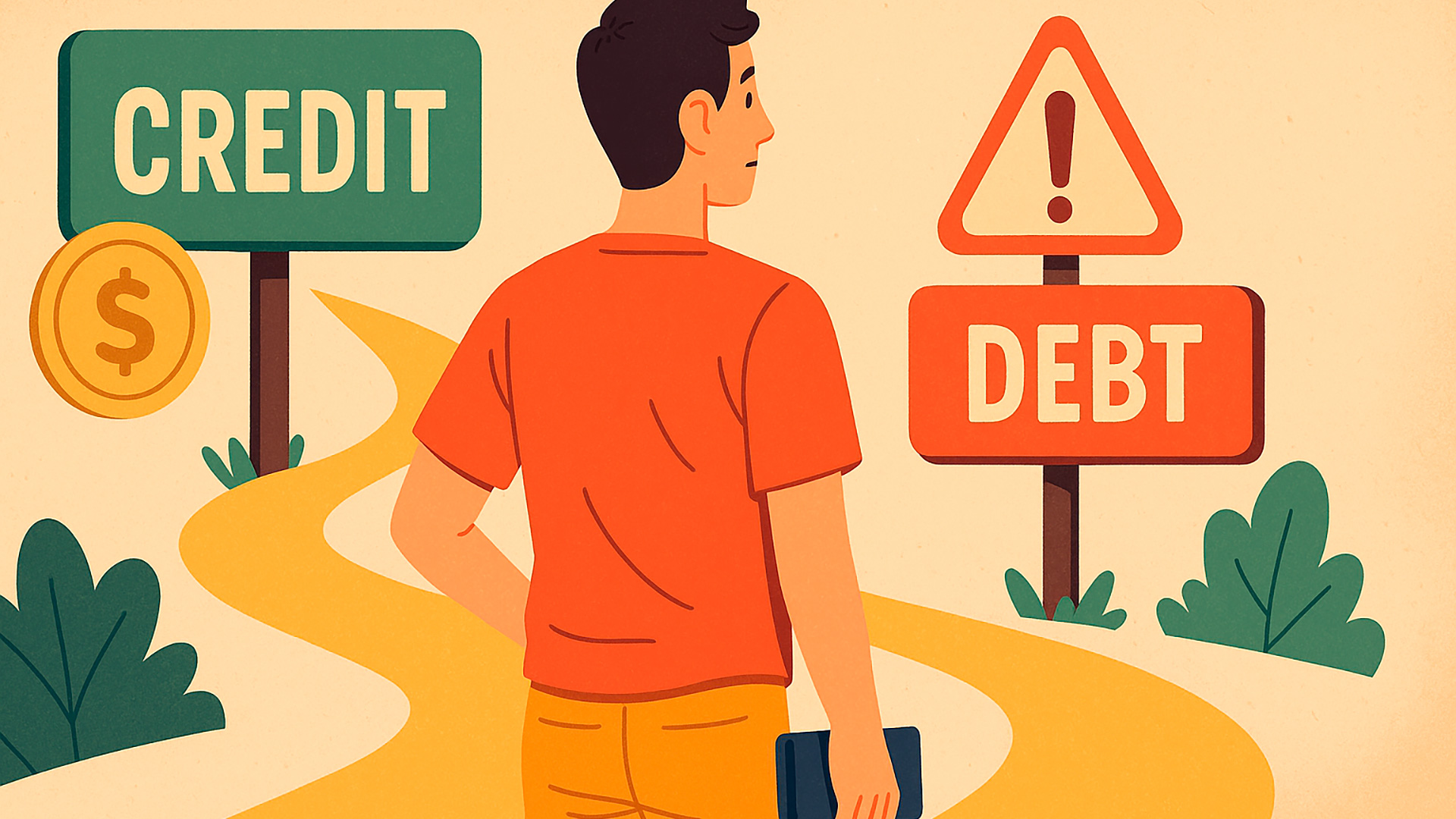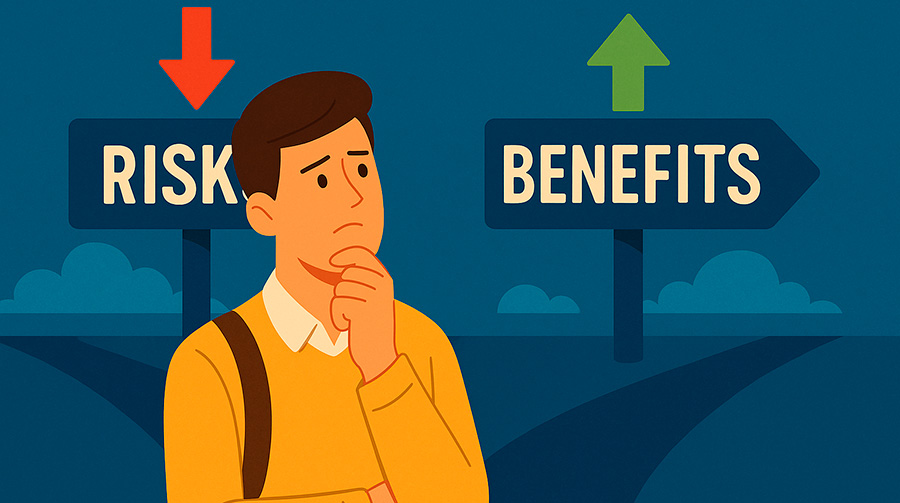The Smart Way to Begin: Understanding the True Power and Pitfalls of Credit

Stepping into the world of credit can feel like unlocking a door to adulthood — one that opens opportunities but also comes with real responsibility. For many, credit is a tool that helps build stability, fund dreams, and manage emergencies. Yet without awareness, it can just as easily become a trap. To start your credit journey successfully, you need more than enthusiasm — you need clarity. Understanding how credit works, what risks exist, and how to balance borrowing with discipline sets the foundation for lifelong financial confidence.
What Credit Really Means in Everyday Life
At its core, credit is trust — a lender’s belief that you’ll repay borrowed money on time. That trust is expressed through credit scores and reports, which influence your ability to rent an apartment, get a loan, buy a car, or even land certain jobs. When you start your credit journey, you’re essentially beginning a long-term relationship with the financial system. Every decision — from paying a bill late to maxing out a card — shapes how institutions view your reliability.
For newcomers, it’s easy to think of credit as free money. It’s not. It’s more like borrowing from your future income. Used wisely, it helps you grow; used carelessly, it can weigh you down. That’s why developing a healthy mindset from the start is more important than chasing quick score boosts.
The Double-Edged Sword: Benefits and Risks
Credit isn’t inherently good or bad — it’s a tool. The way you use it determines whether it builds your wealth or erodes your peace of mind. Let’s look at both sides of the coin.
| Potential Benefits | Possible Risks |
|---|---|
| Builds financial reputation for future loans | Debt can accumulate quickly with poor management |
| Provides flexibility for emergencies or big purchases | High interest rates can make repayment costly |
| Access to better housing or job opportunities | Missed payments can damage your score for years |
| Rewards and perks from responsible credit card use | Temptation to overspend beyond actual income |
The goal isn’t to avoid credit altogether but to approach it consciously. When you start your credit journey with both eyes open, you’re far less likely to fall into the common traps that cause financial stress later on.
How to Build Credit From Scratch
If you’re new to credit, lenders have little to judge your reliability on — a catch-22 that frustrates many beginners. But everyone starts somewhere, and there are practical ways to build credit safely and steadily.
Reliable Ways to Begin
- Apply for a secured credit card: It requires a small deposit that becomes your credit limit. This low-risk option builds payment history without overspending danger.
- Become an authorized user: Joining a family member’s card allows you to benefit from their good payment record.
- Use credit-builder loans: Offered by some banks and credit unions, these small loans are designed specifically to help newcomers establish a history.
- Pay all bills on time: Even rent and utilities, if reported, strengthen your creditworthiness.
Consistency is the secret ingredient. Your first goal isn’t a perfect score — it’s demonstrating reliability. Every on-time payment tells lenders you’re someone they can trust, and that trust compounds over time.

Common Pitfalls When Starting Out
Starting credit can be empowering, but excitement can cloud judgment. Many new borrowers make mistakes that take years to undo. Awareness is your best defense.
Watch Out for These Mistakes
- Carrying balances unnecessarily: You don’t have to be in debt to build credit. Paying off balances in full keeps interest away and your score strong.
- Applying for too many cards: Each application triggers a hard inquiry, which can temporarily lower your score and suggest desperation to lenders.
- Ignoring your statements: Small recurring charges or missed due dates can spiral into unexpected debt.
- Closing old accounts too soon: The length of your credit history matters — older accounts give your profile strength and stability.
Learning these lessons early means you’ll start your credit journey with a sense of control, not fear. Mistakes will happen, but how you respond to them is what defines your long-term success.
Understanding the Key Drivers of Credit Health
Credit scores are built from several core factors. Knowing what influences them helps you focus on the habits that matter most. You don’t need to obsess over every detail — just follow the behaviors that have the biggest impact.
| Factor | Weight | How to Maintain It |
|---|---|---|
| Payment History | 35% | Always pay on time — even minimum payments count |
| Credit Utilization | 30% | Keep balances below 30% of your total limits |
| Credit Age | 15% | Keep old accounts open and active |
| New Credit | 10% | Limit hard inquiries; space out new applications |
| Credit Mix | 10% | Combine credit cards and installment loans over time |
When you start your credit journey with these fundamentals in mind, you’re building not just a score — you’re building trust with the financial system. Think of it as your financial reputation. The better you maintain it, the more opportunities will come your way.
Balancing Borrowing and Responsibility
Good credit management isn’t about never borrowing — it’s about knowing when and why you borrow. Using credit wisely means matching your spending with purpose and foresight. The rule is simple: never borrow for something that loses value faster than you can repay it. Borrow for growth, not consumption.
Smart Borrowing Strategies
- Use credit for planned, budgeted expenses, not impulse buys.
- Set spending alerts to track how close you are to your limit.
- Avoid cash advances — they come with higher interest rates and no grace period.
- Review your reports at least twice a year to ensure accuracy and spot fraud early.
Being proactive protects you. The ability to borrow responsibly can open doors to car loans, mortgages, and business opportunities — but that same ability can close them if neglected. To truly start your credit journey the right way, think of credit as a tool for stability, not status.
Credit and Mental Health: The Emotional Side of Borrowing
Money decisions are never just about numbers — they’re tied to emotions, stress, and identity. Debt anxiety can affect confidence and relationships, especially when bills pile up. The healthiest credit users are those who set boundaries early. They understand their emotional triggers — whether it’s retail therapy or fear of missing out — and put safeguards in place.
Set spending limits, automate payments, and talk about money openly with trusted friends or advisors. Emotional awareness doesn’t weaken your relationship with credit; it strengthens it. You can’t control the economy, but you can control how you react to it.
When and How to Seek Help
If you find yourself overwhelmed — juggling multiple cards, missing payments, or unsure how to get back on track — seek guidance sooner rather than later. Financial advisors, nonprofit credit counselors, or even your bank can help create a realistic plan to manage debt. The earlier you act, the easier it is to recover and rebuild.
Remember, credit isn’t a moral judgment. It’s a snapshot of behavior at a moment in time. And like any snapshot, it can be retaken with a better angle, better lighting, and better choices.
Building a Credit Story You Can Be Proud Of
When you decide to start your credit journey, you’re doing more than applying for a card or taking a loan — you’re shaping the financial version of your life story. Every payment, every responsible choice, every review of your report is a chapter in that story. Approach credit with curiosity and discipline, and it becomes a partner, not a burden. The key is awareness: knowing the risks, understanding the rewards, and respecting the balance between the two. With that mindset, your credit journey won’t just start strong — it will stay strong for decades to come.
